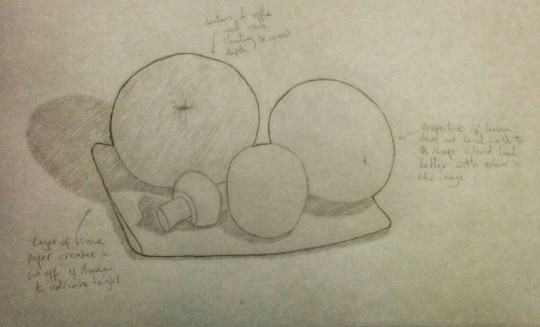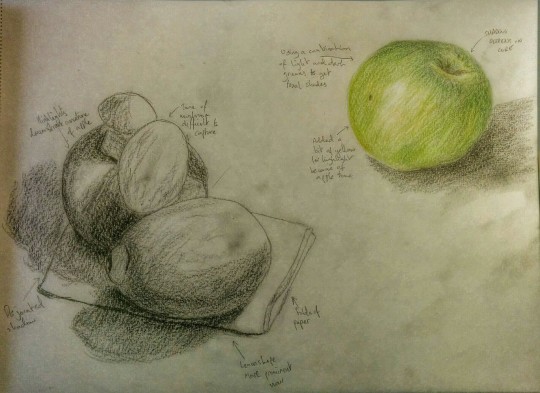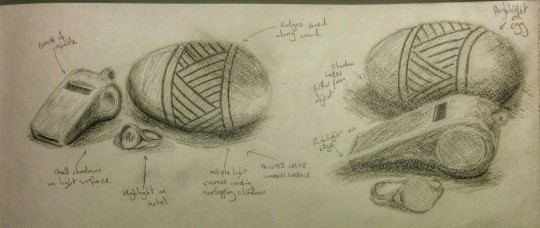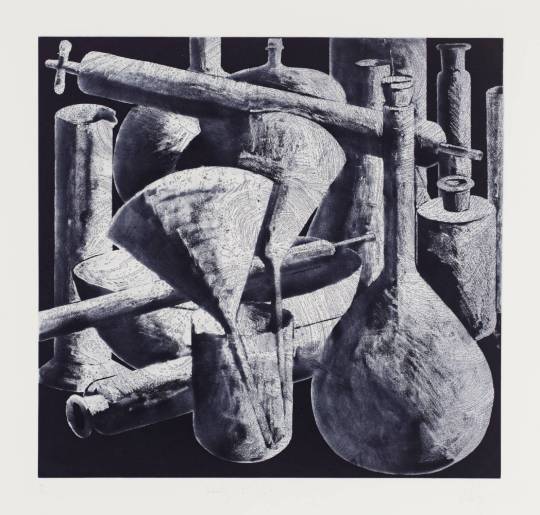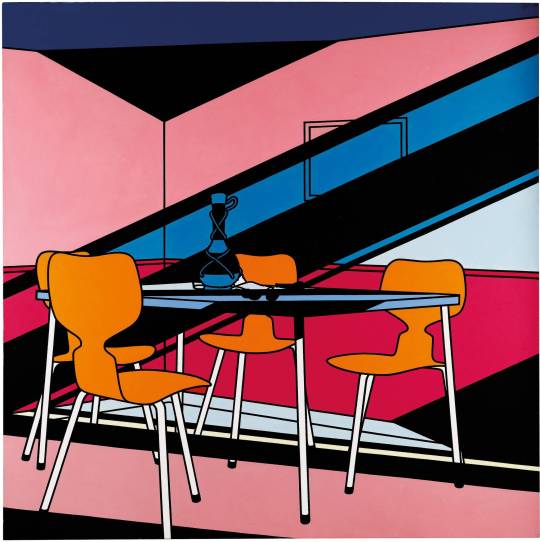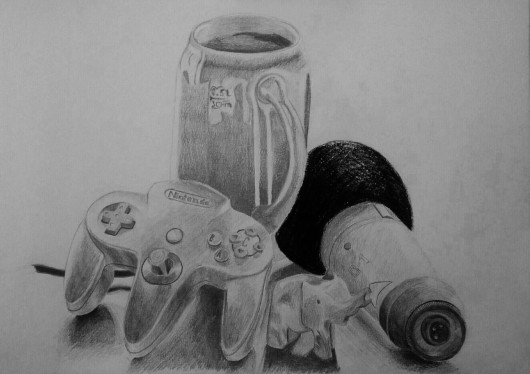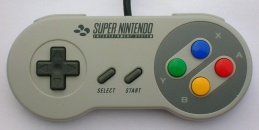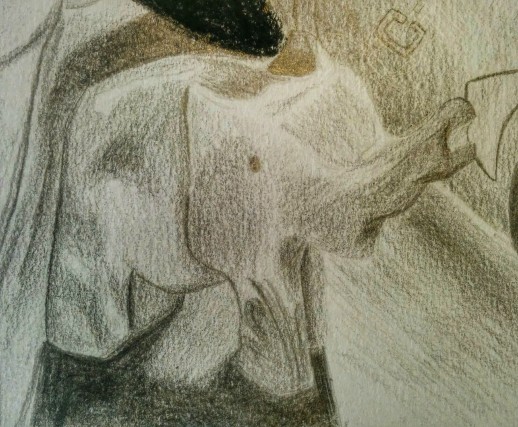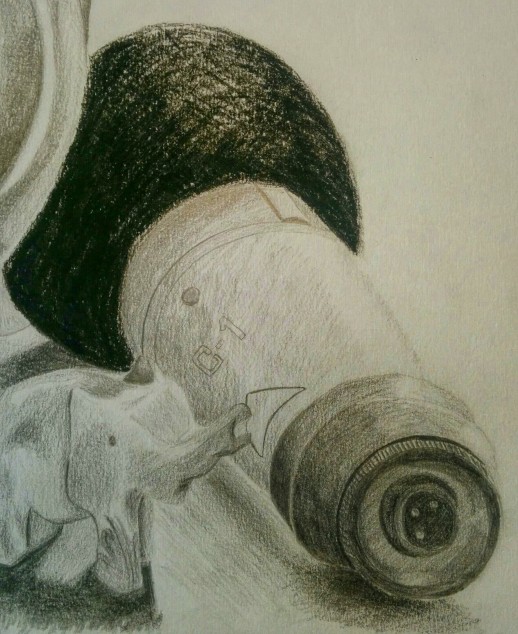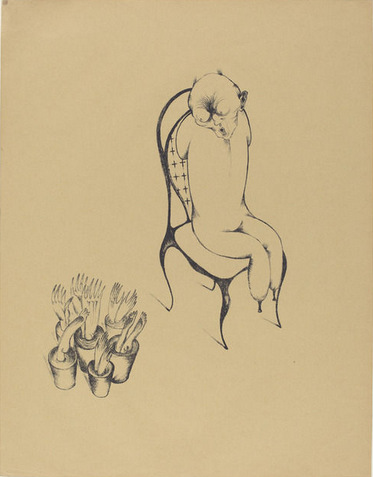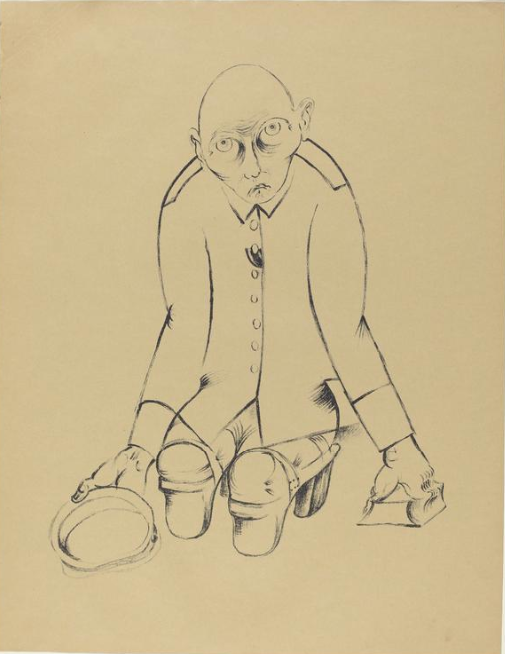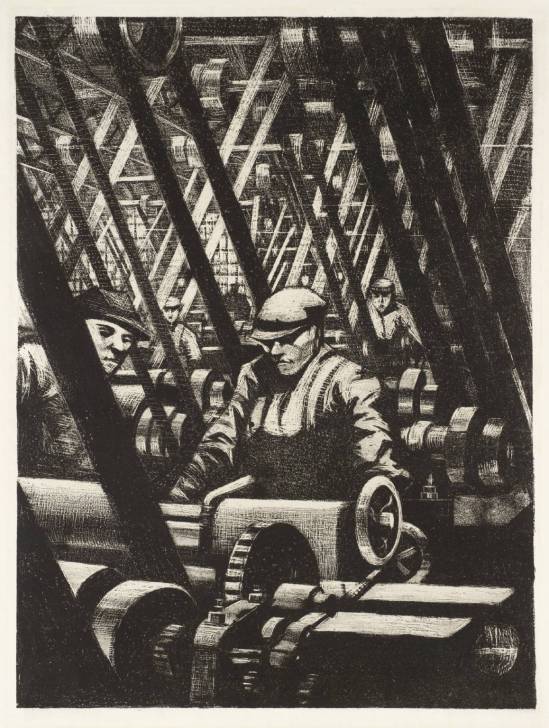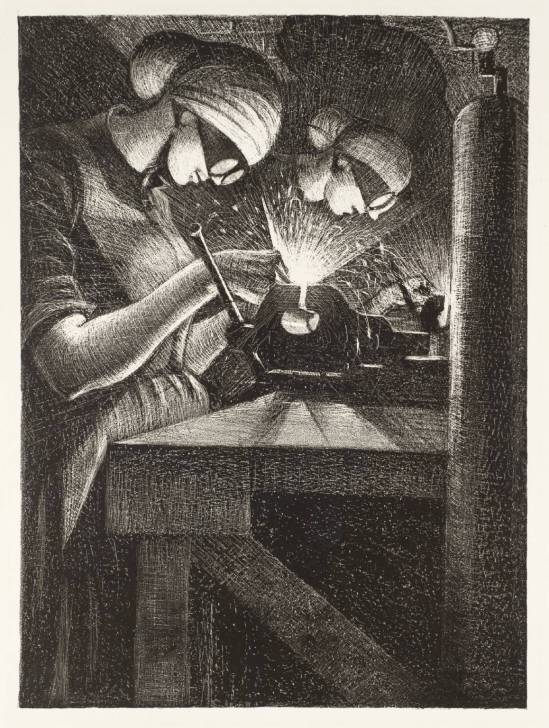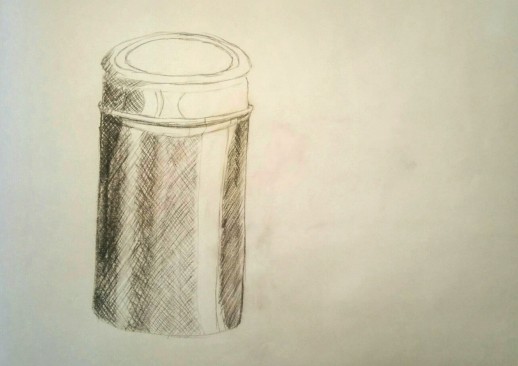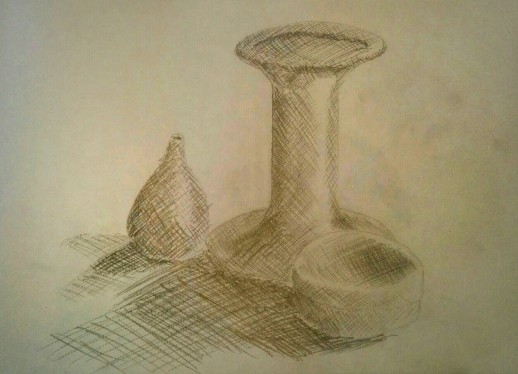For this research point I have looked at a variety of still life work done by numerous artists over the past few centuries and I will look at how modern artists today have used similar techniques to develop the practice of still life drawing further.
Traditional Artists
Paul Cezanne – 19th Cent.
From Cezanne’s work I can see that he liked to use a lot of thick strokes to create the shapes of the subject. There tends not to be a lot of focus in the way of lighting and shadow but instead, the arrangement of his objects make use of their difference in colour. The colours themselves are very typical to what one can expect that particular item to look like for example below, the apples are of a very natural warm red and creates a welcoming mood the painting.

This painting demonstrates less attention being paid to the detail of the objects and more to do with capturing the arrangement and distinction between those objects. The colour of the skull and that of the table are quite similar so it could be argued that there was a conscious thought that there should be clear separation between the two and is something to consider when arranging my own piece.

Pieter Claesz – 17th Cent.
Straight away I can see that Claesz took a lot more time in creating a more detailed representation of his scene as opposed to Cezanne however where Cezanne would use a brighter assortment of colours so that the objects check against one another, Cezanne made use of the light and shadow that he was good at in order to contrast the objects. The colours are more subdued perhaps in a bid to make the scene more realistic.
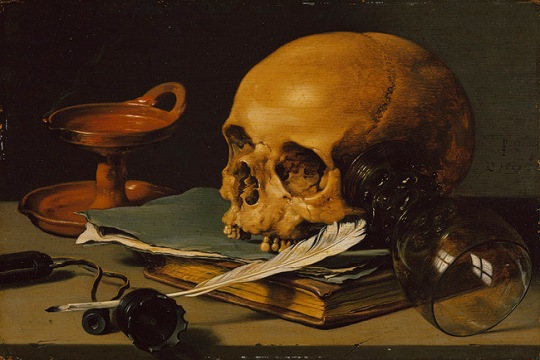
Often with art I believe that one of the greatest achievements is to represent a subject in the simplest possible terms, yet when I look at the picture below I cannot but help appreciate the incredible detail that Claesz has put into it. This painting demonstrates my point about contrasting objects even more so than the previous as a lot of the colours are very similar to one another and tend to sit around a monochromatic and yellowish set of colours so Claesz’s use of shadow and lighting shows it’s importance.
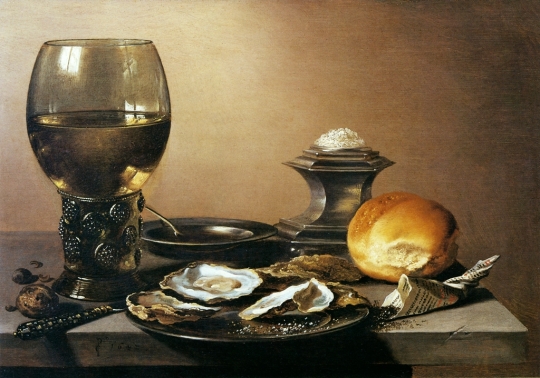
Modern Still Life
Moving on toward the 20th century we can see a drastic shift of trying to capture still life in a realistic setting to representing a scene in other ways and the strongest example of this is with cubism.
Pablo Picasso – 20th Cent.
Before this research exercise I not aware of Picasso’s work in still life, I had only ever seen his work with people and figures so it is refreshing to see something, which to me, is new of Picasso. Such as what I was saying earlier about how simplicity is so important in art, Picasso’s work truly defines this ideal. Looking at the painting below there are subtle points made on the objects which Picasso felt the need to include for example the candle stick on the left has a little bump down bu the side of it which suggests a melted drop of wax has collected at the base of the candle. Nothing more is needed to represent this aspect yet it comes across so clearly in the painting. Even when he draws a glass with such obscure lines and angles, we can still tell that the object is a glass because of other factors that it’s translucency and light blue colour.
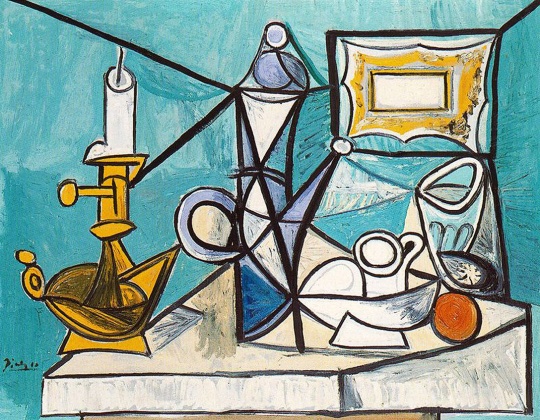
This painting show more detail in the objects than the previous and yet retains Picasso’s trademark style. I admire the perspective of the shapes that he has chosen to paint such as the shape of the bull’s head but he has then detailed it with some block shading and cracks along the bone. The jug has such a fascinating look to it that part of me hopes it is a real object! The pattern is such a peculiar choice compared to how the rest of the painting looks and even though the pattern does stand out, the general feeling of the painting does feel balanced. Another interesting point to look at are the shadows beneath the objects and how Picasso has chosen the include them in the style of the more background objects in the room. I must admit it was the last thing I noticed about this painting after I had observed all other aspects which demonstrates the strength of the objects in the room.
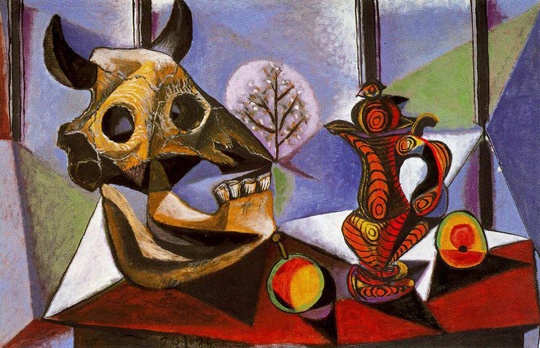
Georges Braque – 20th Cent.
Sticking with the theme of cubism, this still life by George Braque is ignoring the concept of 3D space and the perception of depth is lost as all the objects appear to be on the same plain. Also, unlike some of the other paintings that I have looked at in this segment, the objects are not as easy to discern within the space that they occupy. The colours are light and earthy perhaps to reflect on the fact that most of the objects are either natural or made from natural materials for example the wooden guitar.
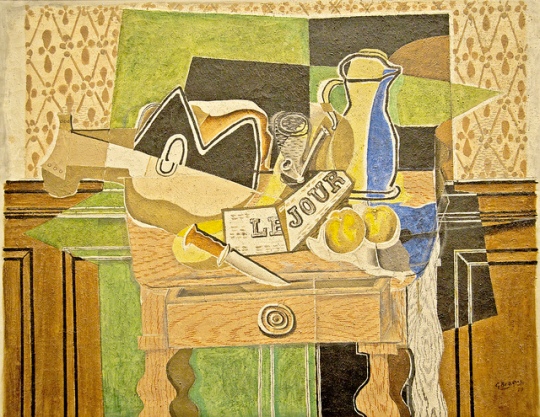
On this next piece, the objects are far more abstract and Braque has made them more difficult to understand immediately what they are. There appears to be more attention paid to the 3D space that the objects are in where you can see more clearly the table that the objects are on and how far back into the painting it goes. Again, Braque has chosen to go with a strict set of colours to use but with more reds and blacks than before.
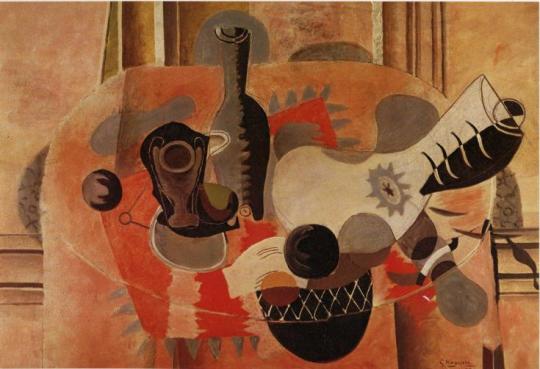
Roy Lichentstein – 20th Cent.
Lichenstein’s style lends to breaking down objects to a near mechanical level so that with as little detail we can tell what object is what and understand it’s purpose immediately. What I do admire about this painting is the choice or lack there of, of colour and yet using competent shading with Lichenstein’s technique, we can clearly discern each objects against one another and it’s role in the space.
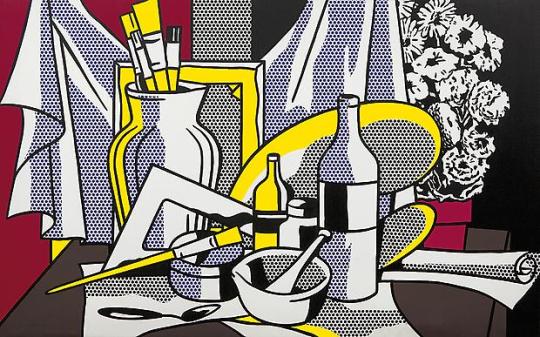
Ralph Goings – 20th Century
Goings is an artist that I was not aware of until I began doing research on this topic. He is a realist painter and manages to capture so many aspects of objects with such inscrutable detail as can be seen in this painting below. The first thing that stands out has to be the reflections on the objects in this still life and how Goings has paid so much attention to having objects appear on one another. Something else that I have to commend is the attention to the way the sauce has stuck to the inside of the ketchup bottle and the mustard jar and how particularly on the bottle you can differentiate between the front side of the bottle and the back.
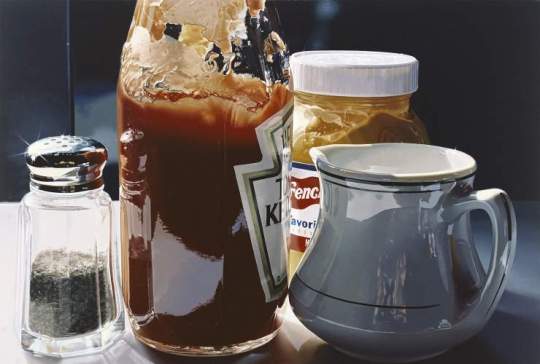
Still Life Art Today
Conor Walton – It’s the End of the World As We Know It
This piece holds to more traditional tropes of still life with the inclusion of the skull and fruit. The deflated globe makes painting more familiar and is what makes the painting easily discernible from a traditional painting. The technique Walton has used is more akin to that of Claesz and there appears to be commentary made with the picture of a Picasso hanging from the back wall.
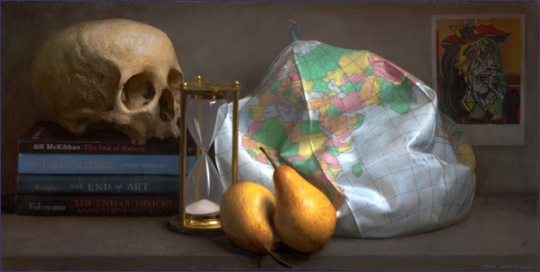
Emma Bennett, A Weightless Quiet, 2013
This piece caught my eye as it is the most unique painting from all the other in the sense that a still life generally is an assortment of objects on a plain or table. This artist has suspended her objects in free space creating a peculiar void and so we cannot be entirely sure what they are doing at the time. Could the objects be falling? Are they being thrown? Are they pinned against an invisible surface? There are a lot of possibilities for what role these objects play in the space.

Conclusion
From the earlier paintings that I have looked at there has been more time spent on associating the correct position of objects in a room and for example with Plaesz, he has clearly studied the concept of light and shadow to represent his objects. When moving into the 20th century there has been a rebellion of the ideal of what a still life means as represented by Picasso and Lichenstein. Whereas with more traditional still life painting there was attention paid to capturing as much of the scene as possible, Picasso and Lichenstein aimed to use there trademark techniques to express a still life as simply as possible whilst at the same time holding onto the traditional idea of a still life. At the same time, Goings pushed the bar the opposite way and aimed to capture as much as possible from the scene in his still life by expressing his painting as if captured by the human eye with the inclusion of lens flare and reflections of glass and shiny objects.
With the still lifes that I have observed, there is a limitation by the technique that some artists use for example Picasso, in cpaturing as much of the scene as possible so I guess it is up to me how far I want to go when creating a still life and how much detail I decide to use based on what style I would do a painting in.

